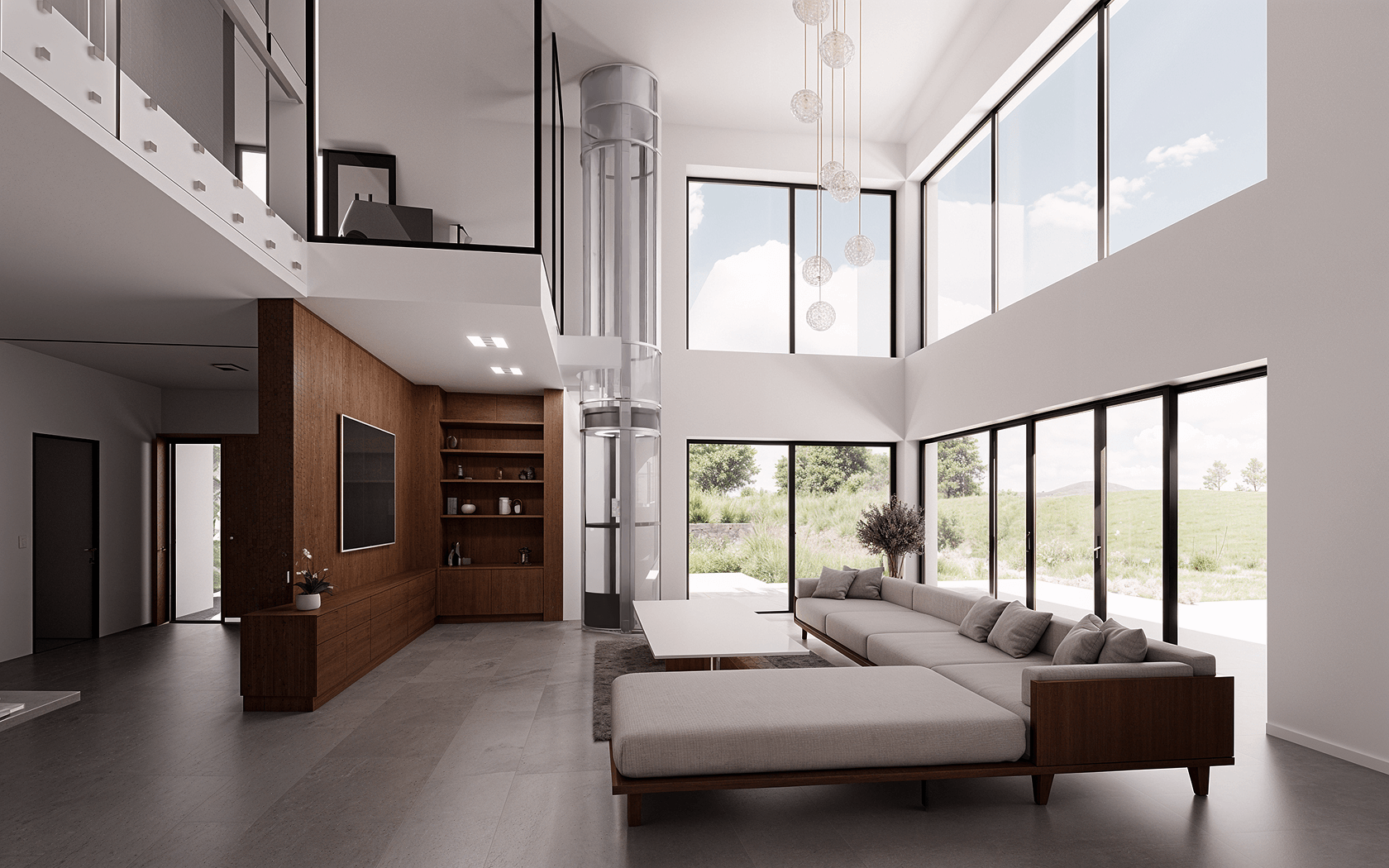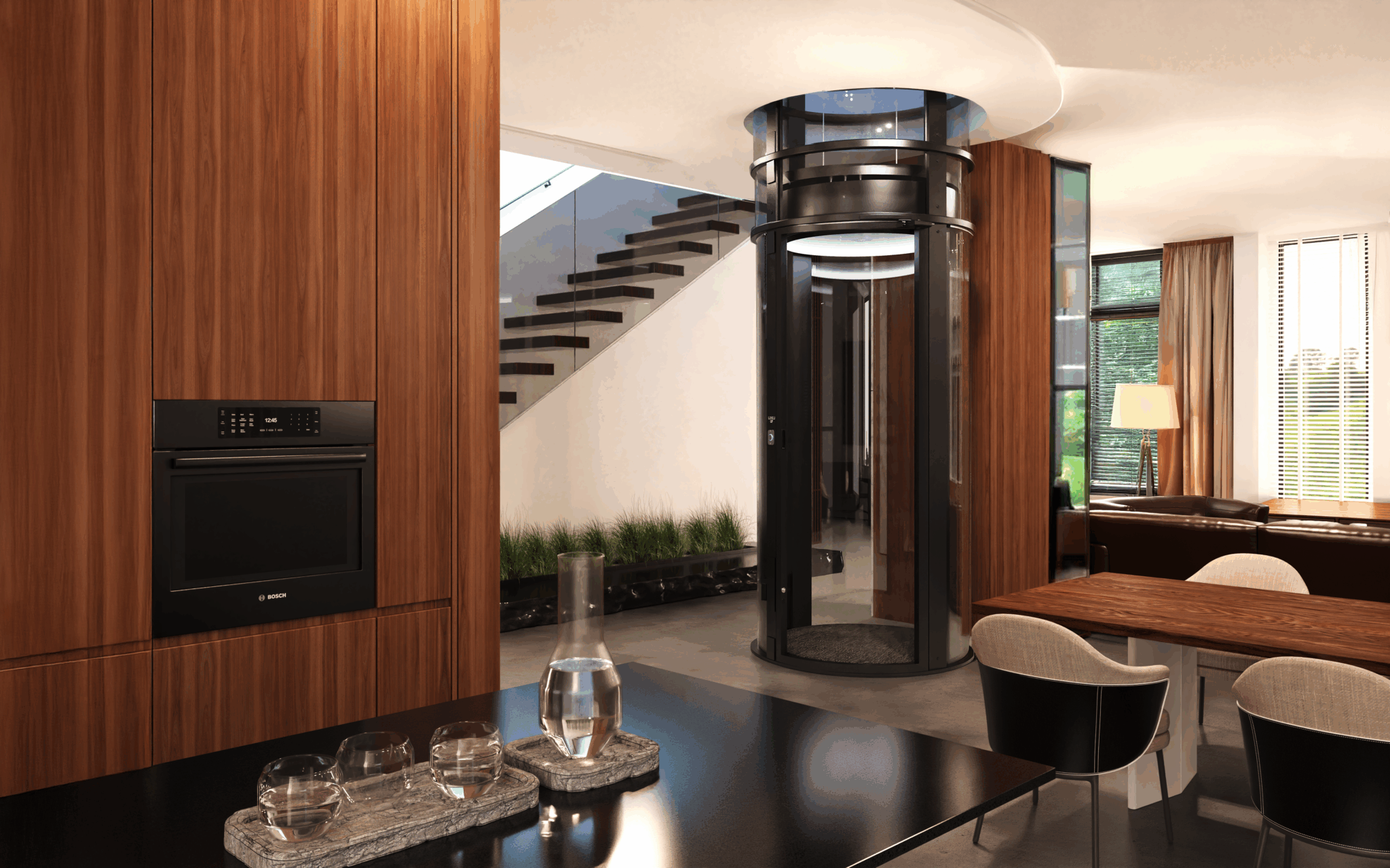Thinking About a Home Elevator? Let’s Break It Down.
You might be early in your search for a residential elevator, exploring how it could transform your home and daily life.
Beyond the convenience of moving between floors with ease, a home lift can add long-term value, improve accessibility, and modernize your living space.
Before you dive into the installation process, it’s essential to understand the different technologies available.
The two leading technologies—pneumatic vacuum elevators and hydraulic elevators—each come with unique benefits, design considerations, and maintenance needs.
The right choice depends on your priorities, space, and vision for the future.
What Are Pneumatic Vacuum Lifts?
Pneumatic lifts use air pressure and vacuum technology to move the cabin between floors.
These lifts are powered by clean, efficient systems that eliminate the need for cables, pistons, or machine rooms.
Key Features:
- Sleek, self-supporting cylindrical shaft
- Minimal construction requirements
- Energy-efficient: uses power only during ascent
- Eco-friendly and oil-free
- Compact footprint ideal for retrofits and tight spaces
What Are Hydraulic Home Lifts?
Hydraulic elevators use fluid-driven pistons to raise and lower the cab. These systems require a machine room and typically more structural work during installation.
Key Features:
- Strong lifting capacity
- Machine room and pit required
- Operates using hydraulic oil
- Typically more complex installation and ongoing maintenance
- Traditional appearance and design
Performance Comparison
When it comes to performance, pneumatic and hydraulic home lifts differ in several key areas.
Space requirements are one of the most noticeable differences. Pneumatic lifts are self-contained and require minimal structural modifications—they don’t need a pit or a separate machine room.
In contrast, hydraulic systems typically require both, which can add complexity and cost to your installation.
Energy use also varies. Pneumatic lifts consume electricity only during ascent, relying on gravity for descent, making them highly efficient. Hydraulic lifts, however, use energy continuously and require a fluid-based system that increases power consumption.
Installation time tends to be shorter and less invasive for pneumatic lifts due to their modular design and minimal site preparation. Hydraulic systems often take longer to install because of their structural demands and machinery setup.
Maintenance needs are significantly lower for pneumatic lifts. Since they don’t use oil or pistons, there’s no risk of leaks or regular fluid replacement. Hydraulic lifts, on the other hand, require routine oil changes and upkeep to ensure smooth operation.
Finally, when it comes to aesthetics, pneumatic elevators offer a modern, sleek appearance that complements contemporary home designs.
Hydraulic lifts typically lean more traditional in style and often have a bulkier footprint due to their mechanical components.
Cost Comparison: What to Expect
While pricing varies by model, customization, and location, here’s what you should keep in mind:
- Pneumatic lifts can offer cost savings on construction and maintenance, thanks to their self-contained design and minimal site prep needs.
- Hydraulic lifts may have a lower upfront price point in some cases—but installation costs and long-term maintenance (like oil changes and machine servicing) can add up.
Pro Tip: Instead of comparing sticker prices alone, factor in lifetime costs, including installation, energy efficiency, and maintenance.
Which Is Right for Your Home?
Choose a pneumatic lift if you:
- Want a space-saving or retrofit-friendly option
- Prefer a modern look with less construction disruption
- Value long-term maintenance savings and eco-conscious design
Choose a hydraulic lift if you:
- Have ample space for a pit and machine room
- Prefer traditional design aesthetics
- Need heavy-duty capacity for frequent high-load use
Still Deciding? Let’s Talk.
Every home—and every homeowner—is different. If you’re exploring lift options and want to know what works best for your space and budget, our Level Ups team is here to help.
Book a free consultation today to get personalized recommendations and take the next step toward more accessible living.









